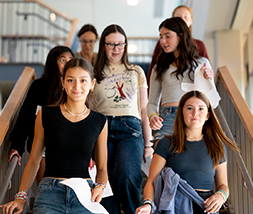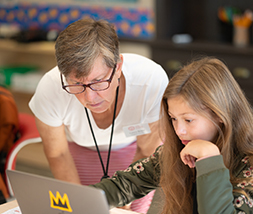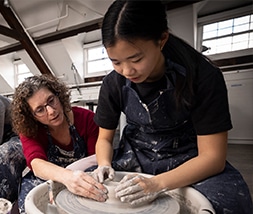Curriculum Guide
History
Class I: Early American History
Class I History will introduce students to the early history of the United States and the dynamics involved in forging a new American nation. We will explore the question, “What does it mean to be an American?” as we study some of the people, events, values, and conflicts that shaped early America’s sense of itself and that continue to define us as a nation today. Throughout the year, we will study our history from multiple perspectives. The course will begin with a study of the Native Americans and their influence on the American identity. Next, we will examine the period of early American colonization and analyze the contributions of both the Africans and the Europeans to the American picture. We will then consider the causes and consequences of the American Revolution, followed by the development of the U.S. Constitution and its significance as the foundation of the new American republic. An equally important aim of this course is to teach Winsor students to think and read like a historian. We hope to foster a variety of specific skills that make Winsor students active learners and critical thinkers. In particular, we will practice active reading, learn how to conduct historical research, analyze historical sources, and craft cohesive and persuasive arguments in class discussions and writing assignments.
Class II: Ancient Greece and Rome
In this course, students will learn about some of the ancient world’s largest and arguably most impactful civilizations: Greece and Rome. While important historical events and people will be discussed throughout the course, our bigger focus will be on how and why these civilizations rise and fall. As students will see, a great number of factors contributed to the trajectory of events studied. Each civilization’s story is greatly affected by the geography of its surrounding territory and areas it conquered. The diverse cultures that combined to formulate these civilizations makes them truly special in that they were the first generation of global empires. Each civilization took its own unique path, filled with great opportunity and achievement, as well as challenges and tragedy. While the ancient world may seem remote and distant, students will learn both that these two civilizations had dramatic impacts on the world today and that the empires of the ancient world, for better or worse, may not be so different from major powers in the modern world.
Class III: Cultural Traditions and Cultural Encounters
Class III students will study the Silk Road, a network of land and sea trade routes that connected East Asia to the Mediterranean. The Silk Road linked different cultures and facilitated the movement of ideas, technologies, goods, art styles, music, religions, and people. This network brought diverse peoples together across great distances, and it allowed for a global sharing. For example, Roman scribes used paper made in China, Indian musicians played instruments made in Persia, and Samarkand mathematicians studied the theories of Arabian scholars. Using the Silk Road as our focal point, we will explore this cultural exchange and examine its effects on the various cultures. We will study several locations and regions along the Silk Road, concluding with an examination of the birth of Western Europe, made possible in no small part by the opportunities brought through these cultural connections.
Class IV: The Birth of Modern Europe
In Class IV, History students continue with the theme of cultural encounters and cultural exchanges developed in Class III History. This course explores how European states emerged as dominant world powers by the 1500s despite their lack of unity and financial strength at the conclusion of the Crusades in the 1200s. In particular, we consider how European ways of thinking shifted as its citizens entered the modern age. Significant time is spent examining the Black Death, the development of capitalism, the Renaissance, the Reformation, and the advent of strong monarchs. Students will also consider how these events shaped the way Europeans saw themselves as well as those around them. Finally, we will examine how Europeans used their new knowledge and power to conquer and subjugate the citizens of the New World.





